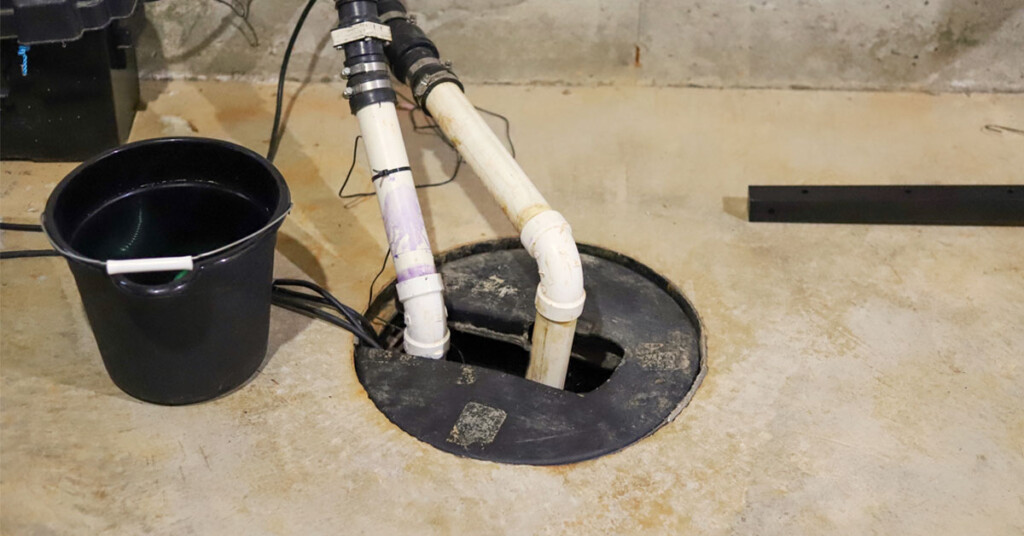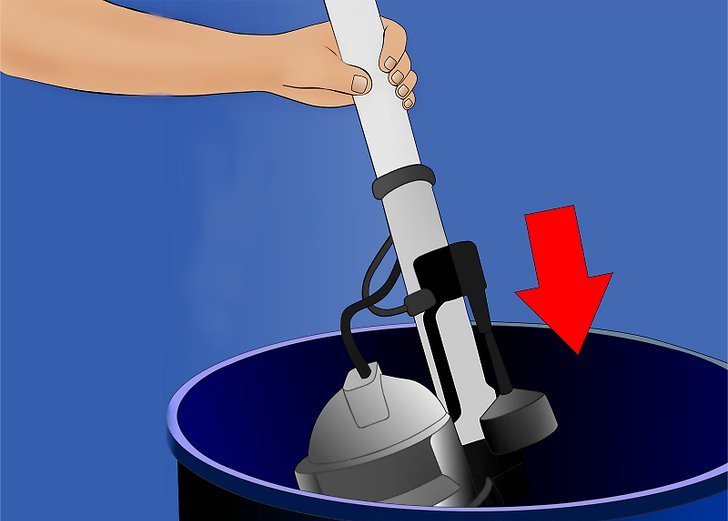Fast Solutions for Servicing a Sump Pump
Fast Solutions for Servicing a Sump Pump
Blog Article
This article down below in relation to Steps to Cleaning Your Sump Pump Properly is particularly insightful. You should check it out.

Sump pumps are vital parts in lots of homes, especially in locations vulnerable to flooding or extreme dampness. They assist stop water damages by effectively removing excess water from basements or crawl spaces. Nevertheless, like any other appliance, sump pumps require regular upkeep to ensure they function successfully when needed one of the most. Cleaning your sump pump is a vital part of its maintenance, and understanding just how to do it properly can save you from expensive fixings and possible catastrophes.
Intro
Preserving a tidy sump pump is crucial for its correct functioning and longevity. Ignoring this necessary task can cause obstructions, breakdowns, and inevitably, water damage to your building. For that reason, discovering just how to clean a sump pump is critical for property owners that depend on these tools to maintain their cellars completely dry and secured.
Understanding the Sump Pump
Prior to diving into the cleansing procedure, it's essential to have a fundamental understanding of how a sump pump functions. Normally set up in a pit or container listed below the cellar flooring, a sump pump consists of a number of key parts, including a pump, a float switch, and a discharge pipe. When water builds up in the pit, the float button activates the pump, which then pumps the water out via the discharge pipe, far from the structure's foundation.
Signs of a Dirty Sump Pump
Understanding when your sump pump requires cleansing is important for stopping possible malfunctions. Some typical indicators that indicate a dirty sump pump consist of unusual noises during procedure, decreased water circulation, and noticeable debris in the pit. If you see any one of these signs and symptoms, it's necessary to cleanse your sump pump promptly to prevent any additional issues.
Getting ready for Cleansing
Prior to you start cleansing your sump pump, it's necessary to take some safety precautions. Begin by shutting off the power to the pump to avoid any kind of electric accidents. Additionally, wear appropriate safety gear, such as gloves and safety glasses, to protect yourself from dirt, debris, and possible pathogens.
Step-by-step Guide to Cleansing a Sump Pump
Turning off the Power
Begin by separating the power supply to the sump pump to prevent any accidents while cleansing.
Eliminating Debris and Dirt
Make use of a pail or a scoop to remove any noticeable debris, dirt, or sediment from the sump pit. Dispose of the particles appropriately to avoid it from blocking the pump or the discharge pipeline.
Cleaning up the Pump and Float Change
Once the pit is clear of particles, very carefully get rid of the pump from the pit. Inspect the pump and the float button for any signs of damage or wear. Use a soft brush or cloth to cleanse the surface areas and eliminate any kind of built up gunk.
Purging the System
After cleaning up the pump and float switch, purge the sump pit with clean water to eliminate any type of staying dirt or sediment. This will aid ensure that the pump operates efficiently and efficiently.
Checking for Correct Performance
Prior to re-installing the pump, carry out a quick test to guarantee that the float switch turns on the pump appropriately. Pour some water right into the sump pit and observe the pump's procedure. If whatever is operating appropriately, you can reassemble the pump and reconnect the power supply.
Maintenance Tips to Keep Your Sump Pump Clean
Along with routine cleansing, there are several maintenance suggestions you can comply with to keep your sump pump in optimal condition:
Verdict
Cleaning your sump pump is a vital aspect of its maintenance and makes sure that it operates successfully when you require it the most. By adhering to the steps detailed in this overview and integrating regular maintenance right into your routine, you can expand the lifespan of your sump pump and safeguard your home from water damage.
6 STEPS ON HOW TO CLEAN A SUMP PUMP PROPERLY
UNDERSTANDING SUMP PUMPS
Your sump pump plays a crucial role in protecting your home by managing and removing excess water. It primarily functions as a “shield”, guarding your basement against the damaging effects of water accumulation. The pump is housed in a sump pit in the lowest part of your basement, and its job is to pump out any water that collects there.
During heavy rainfalls or when snow melts rapidly, water can infiltrate your basement, posing potential risks like flooding, structural damage, and harmful mold growth. Here, the sump pump springs into action, pumping out the intruding water and directing it away from your home.
SAFETY FIRST
Before cleaning, remember to prioritize safety. Disconnect the sump pump from the power source to prevent any accidental electric shocks. Also, wear sturdy gloves to protect your hands from any sharp or dirty components within the pump.
REMOVE THE SUMP PUMP
After ensuring your safety, the next step is to remove the sump pump from its pit. Doing this might require careful maneuvering as you don’t want to damage any pump components. Once removed, clean the sump pit to remove any accumulated debris or sludge.
INSPECT THE PUMP
Inspect the pump for any visible signs of wear or damage. Check the power cord, float switch, and impeller housing. If any components look worn out or damaged, consider replacing them to ensure optimal performance.
CLEAN THE PUMP
Thoroughly clean the pump with warm, soapy water. Make sure to rid it of any dirt, gravel, or other debris that might impede its performance. You can use a toothbrush to clean the small, hard-to-reach parts of the pump.
REINSTALL THE SUMP PUMP
Reinstall the pump into the sump pit Make sure it’s positioned correctly to remove the water effectively Once it’s back in place, reconnect it to the power source TEST THE PUMP
Finally, pour some water into the pit to ensure the pump works correctly. It should start automatically and begin pumping out the water; if it doesn’t, check the power source and the positioning of the pump.
Remember, while cleaning your sump pump is an essential part of home maintenance, hiring a professional plumber for a thorough inspection and cleaning at least once a year is also important. This will ensure that your pump is in optimal condition, ready to protect your home from potential water damage.
BEST PRACTICES FOR CLEANING SUMP PUMP DISCHARGE PIPES
Regular Inspection: Regularly inspect your discharge pipes, especially during heavy rainfall or snowmelt periods. Look for any signs of blockage or damage. Early detection of problems can prevent serious issues down the line. Periodic Cleaning: Over time, sediment and debris can accumulate in the discharge pipes, impeding the flow of water. Regular cleaning helps keep the pipes clear and functioning efficiently. You can use a high-pressure water jet to effectively clean the pipes. Insulation During Winter: In colder climates, discharge pipes can freeze, blocking the outflow of water. Protect your discharge pipes from freezing temperatures by insulating them with foam pipe insulation. This will ensure the sump pump can continue to discharge water even in freezing conditions. Proper Positioning: The discharge pipe should be positioned to direct water away from your home’s foundation. Improper positioning can lead to water seeping back into the basement. Ensure the pipe is long enough and angled correctly. Installation of a Check Valve: A check valve prevents water from flowing back into your sump pit after the pump has pushed it out. Installing a check valve helps maintain the efficiency of your sump pump and reduces the risk of flooding. Minimize Pipe Turns: Every curve or turn in the discharge pipe can decrease the efficiency of water flow. By minimizing turns and bends in your discharge pipe, you can increase the efficiency of your sump pump. https://www.fullspeedplumbing.com/how-to-clean-a-sump-pump-properly9999/

I'm just very occupied with Cleaning & Maintenance Tips for Your Home's Sump Pump and I really hope you enjoyed reading my piece. Sharing is nice. One never knows, you might be helping someone out. I thank you for your readership.
Call Today Report this page